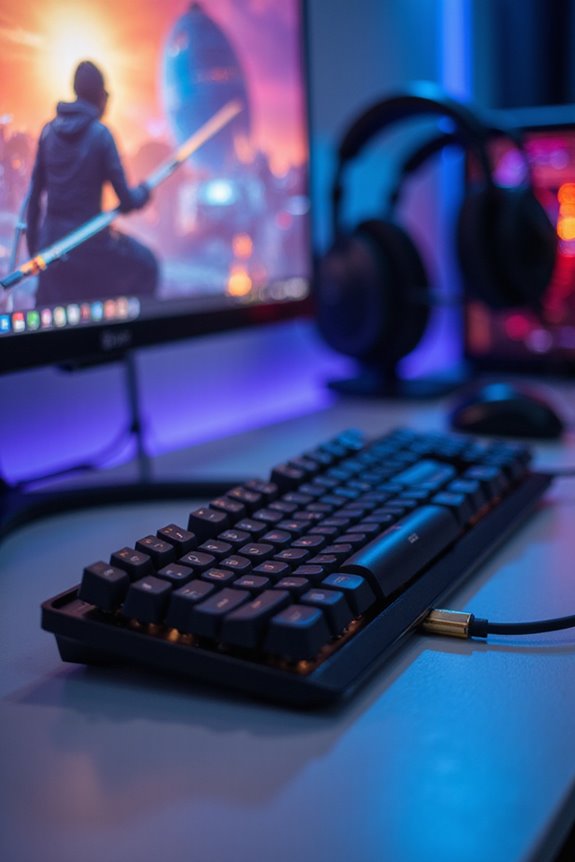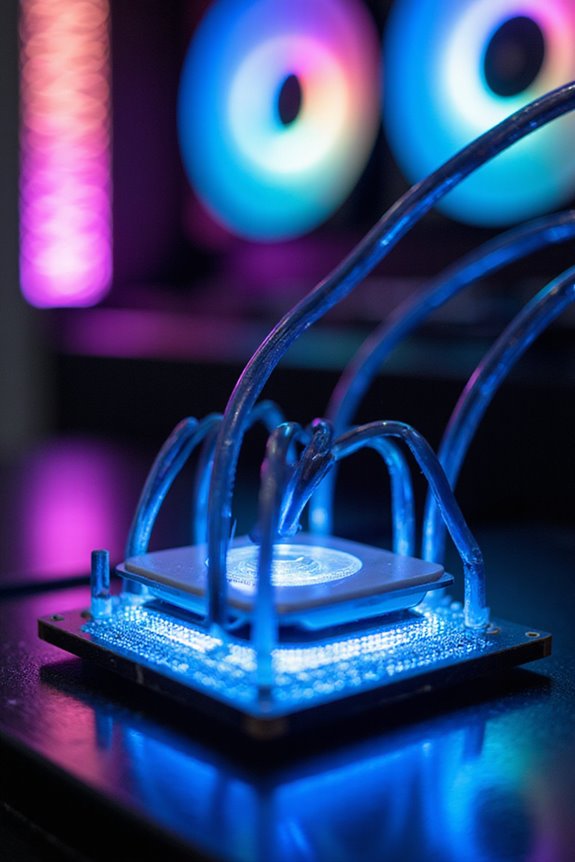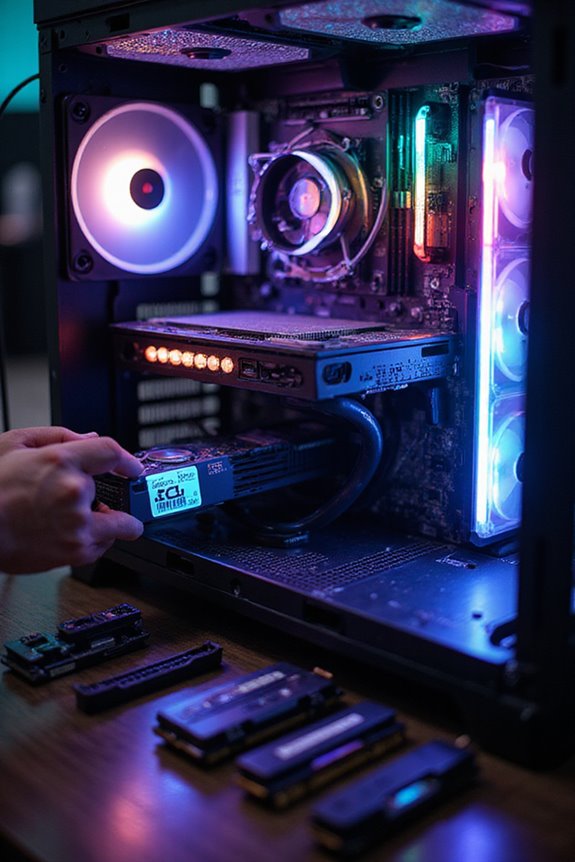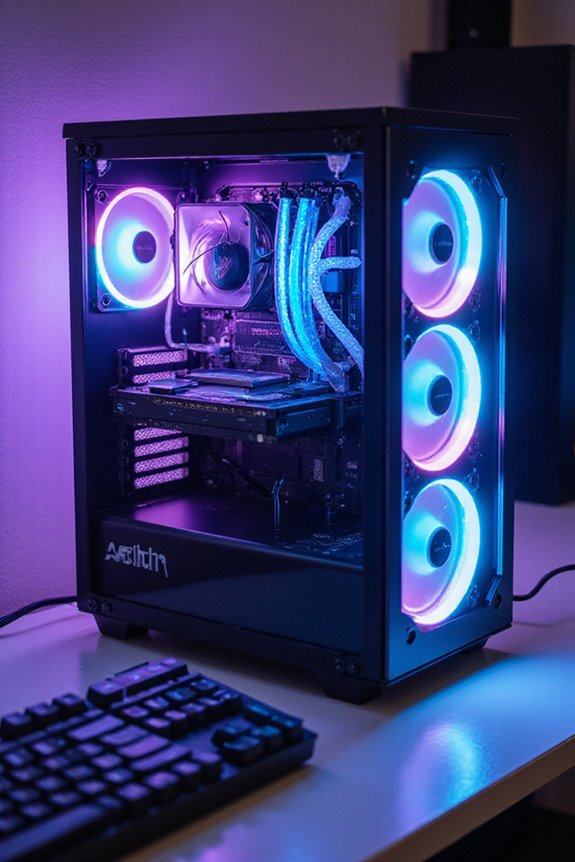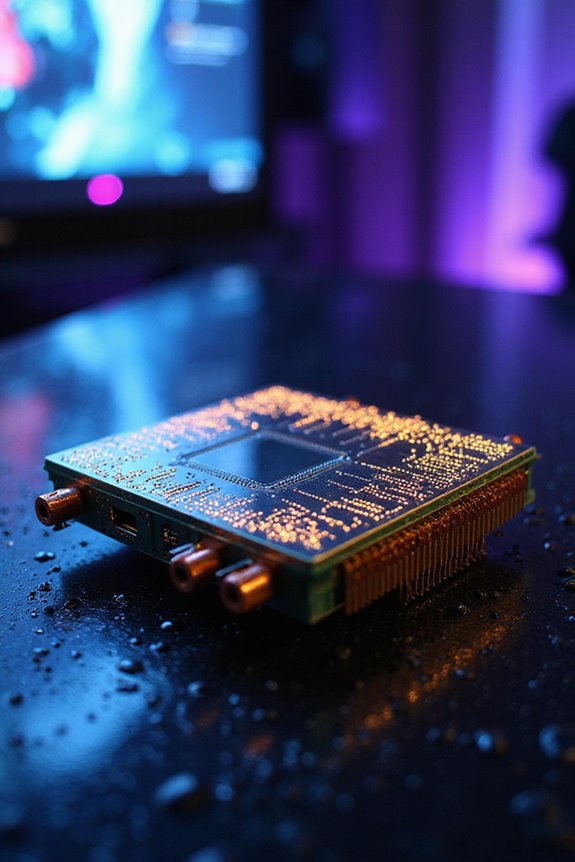HDMI 2.0 is a fantastic upgrade for any gamer. It brings 4K resolution at 60 Hz, which means crisp visuals, and it supports up to 32 audio channels for rich sound with Dolby Atmos. You also get features like adaptive sync, reducing screen tearing for smoother gameplay. While not every device supports all features seamlessly, it’s a solid choice for enhancing your setup. Stick around, and you’ll discover even more ways HDMI 2.0 can transform your gaming experience.
Key Takeaways
- HDMI 2.0 supports 4K resolution at 60 Hz, enhancing visual clarity and smoothness for gamers.
- With adaptive sync technologies, it reduces screen tearing and input lag for competitive gaming.
- Dual video streams allow for immersive split-screen gaming experiences without lag.
- Supports advanced audio formats like Dolby Atmos for a richer sound experience in gaming.
- HDR support improves contrast and color depth, delivering vibrant images in dynamic lighting scenarios.
Enhanced Video Playback With 4K at 60 Hz
When it comes to gaming, HDMI 2.0 really shines with its ability to support 4K resolution at 60 Hz, making it a game-changer for visual quality. Imagine playing your favorite games with stunning clarity, vibrant colors, and a smoothness that keeps your heart racing. With a 24-bit per pixel color depth and support for the Rec. 2020 color space, every scene bursts with life. Plus, the 21:9 aspect ratio offers an immersive wide-screen experience that pulls you right into the action. While higher refresh rates like 144 Hz are fantastic for fast-paced gaming, 4K at 60 Hz strikes a perfect balance, ensuring you won’t feel left behind. It’s truly a step up for any serious gamer.
Immersive Audio Experience
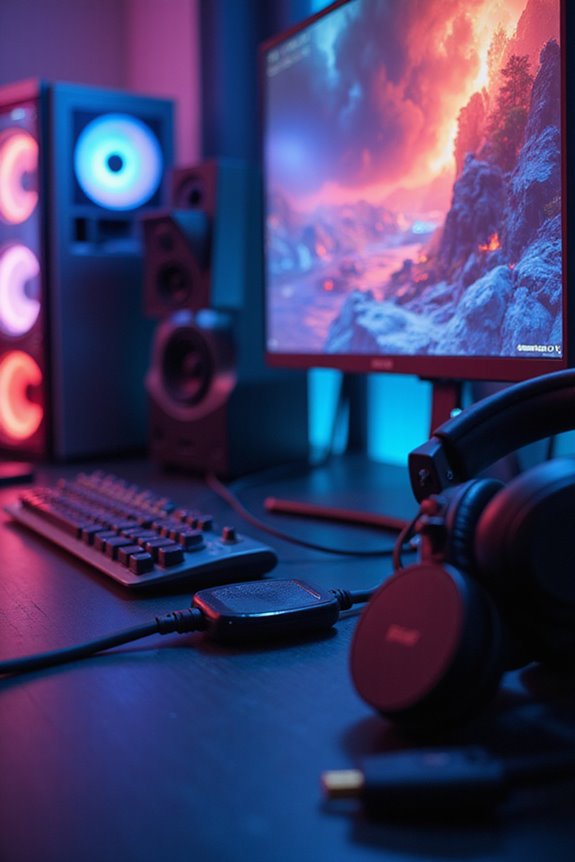
Gaming isn’t just about stunning visuals; it’s also about immersive audio that brings the experience to life. With HDMI 2.0, you can enjoy up to 32 audio channels, which means your games will sound richer and more detailed. Imagine hearing every footstep and distant explosion in perfect clarity. The support for Dolby Atmos and DTS:X creates a three-dimensional audio experience, making you feel like you’re right in the action. Plus, with high-resolution sampling rates up to 1536kHz, the audio quality is simply outstanding. Whether you’re in a home theater or gaming on a console, these formats elevate your sound experience. Just remember, while the tech is impressive, it does require compatible equipment to fully enjoy it.
Dynamic Synchronization for Gaming
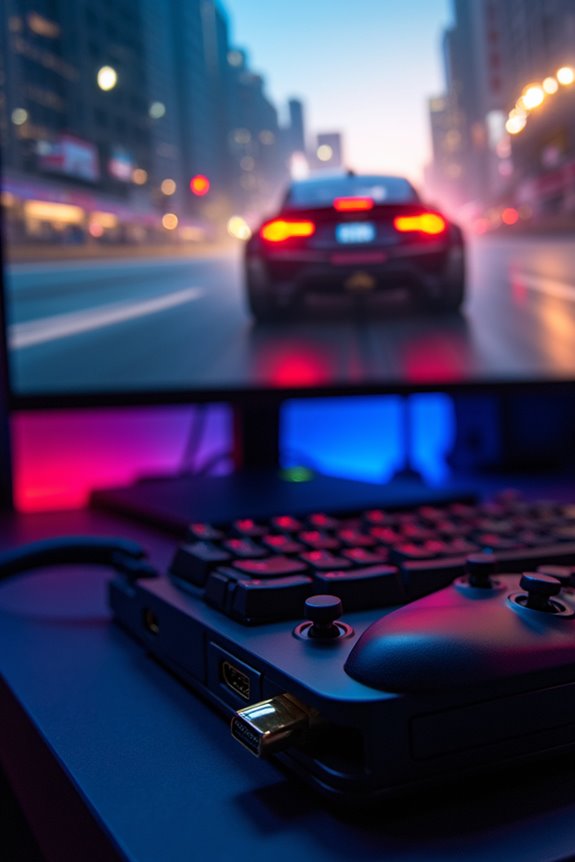
Although it might not be as cutting-edge as HDMI 2.1, HDMI 2.0 still packs a punch with its dynamic synchronization capabilities. The support for adaptive sync technologies like Nvidia G-Sync and AMD FreeSync means smoother gameplay, especially in fast-paced titles. I’ve noticed a significant reduction in screen tearing, which makes a world of difference during intense gaming sessions. While it lacks official Variable Refresh Rate support, it still manages to lower input lag, enhancing my competitive edge. However, not every HDMI 2.0 device will implement these features the same way. Still, for most gamers using 1080p or 1440p setups, it’s a reliable choice that balances quality and affordability, bridging the gap until you’re ready to upgrade.
Dual Video Streams for Split-Screen Gaming
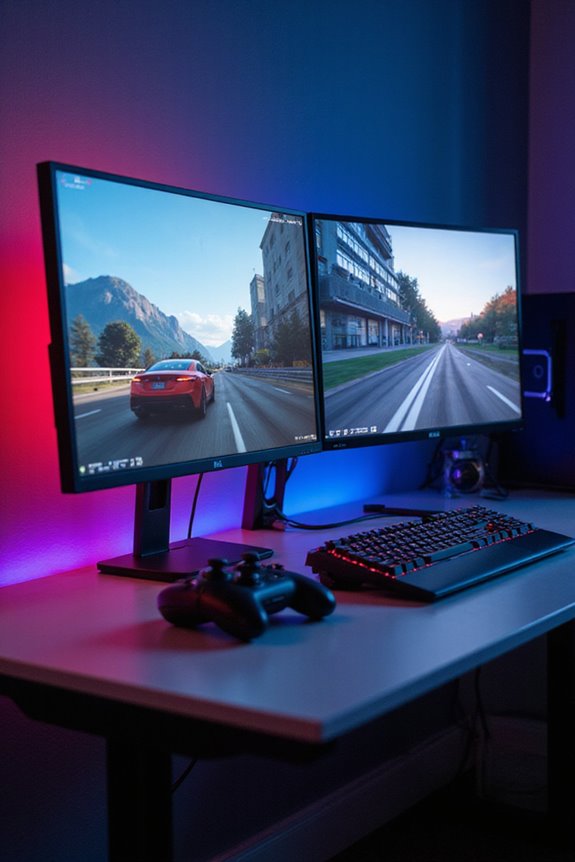
While it might not be the first thing that comes to mind for every gamer, the ability to use dual video streams with HDMI 2.0 can greatly enhance your gaming experience. Imagine playing side-by-side with a friend, each viewing different game perspectives on the same screen. With HDMI 2.0’s 18Gbps bandwidth, you can enjoy 4K resolution at 60 Hz without lag.
This feature not only improves split-screen gaming but also adds versatility to your setup. You can compare strategies or watch different angles simultaneously. Just verify your devices support HDMI 2.0 and that you’ve got quality cables. While it’s a fantastic addition, not all devices support it yet. Still, it’s a worthy upgrade for any serious gamer.
HDR Support for Better Visuals
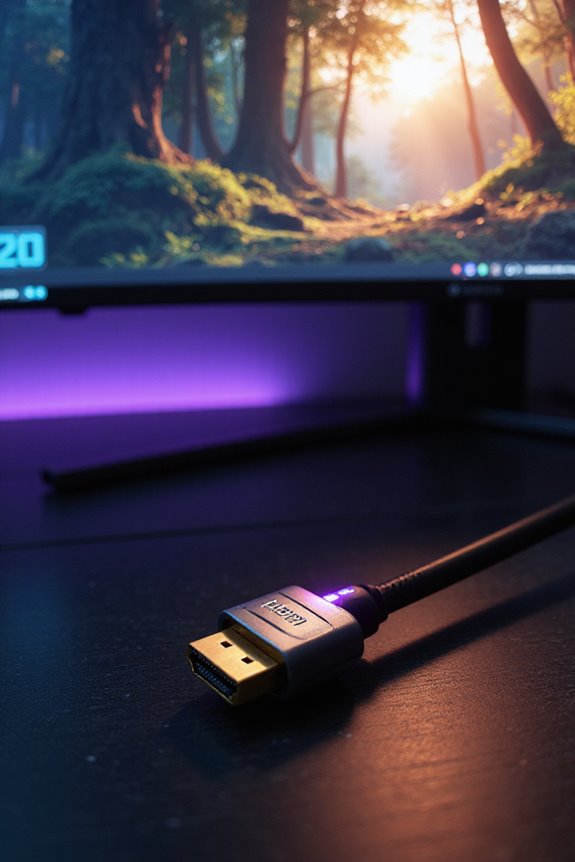
When it comes to enhancing your gaming visuals, HDR support with HDMI 2.0 is a game changer. It supports basic HDR formats like HDR10, boosting contrast and color depth, which means brighter and more vibrant images. You’ll notice the difference, especially in games with rich environments and dynamic lighting. While it’s not perfect—it lacks dynamic adjustments per frame—HDMI 2.0 still delivers a wider color gamut and increased peak brightness, making your gaming experience more immersive. Plus, with its 18 Gbps bandwidth, it handles 4K at 60Hz quite well. Just remember, for top-tier gaming, there are more advanced options out there, but HDMI 2.0 is a solid choice for many setups, and it works with a variety of devices.
Compatibility With Modern Gaming Consoles
HDMI 2.0 has made a significant mark on the compatibility landscape for modern gaming consoles. Both the PlayStation 5 and Xbox Series X/S work seamlessly with HDMI 2.0, allowing gamers to enjoy 4K at 60Hz. However, if you’re looking for ultra-high refresh rates or 8K gameplay, you might feel a bit limited. The Xbox Series X does support FreeSync, which can help reduce screen tearing, but the PS5 lacks this feature. Also, without native Variable Refresh Rate support, you might run into some hiccups during intense gaming sessions. While HDMI 2.0 is budget-friendly and widely compatible, it’s worth considering how its restrictions may affect your gaming experience in the long run.
Cable Requirements for Optimal Performance
To maximize your gaming experience, using the right HDMI cable is essential. High Speed HDMI cables are a must, as they support resolutions beyond 1080p and can handle that impressive 18Gbps bandwidth. Look for cables made with CCS for better efficiency and shielding to protect against electromagnetic interference. Quality matters, too; cables with lower AWG values provide superior performance.
If you’re planning to go long, remember that cables can reach up to 15 meters, but signal quality can drop beyond 13 meters. And don’t forget about certification labels—they’re a reassuring sign of quality. Choosing the right cable isn’t just about length or price; it’s about ensuring every pixel and sound comes through crystal clear.
Versatile Content Support: 3D and Audio Standards
As you explore the capabilities of modern display technology, you’ll quickly notice that versatile content support is a game-changer for an immersive gaming experience. HDMI 2.0 offers support for 3D video modes, allowing dual full-screen 1080p images for that extra depth. It enhances your viewing with higher refresh rates and Deep Color for richer visuals.
On the audio side, the multi-channel setup supports up to 32 channels of One Bit audio, letting you immerse yourself in an immersive soundscape. Plus, it accommodates up to four simultaneous audio streams, perfect for multi-language content. While not every device may utilize these features fully, the potential for a more engaging experience is undeniably appealing. Who wouldn’t want that?
Future-Proofing Your Gaming Setup
When considering how to future-proof your gaming setup, it’s essential to think about the evolving landscape of technology. While HDMI 2.0 supports 4K at 60Hz and offers HDR compatibility, it does have its limitations. You won’t get the higher refresh rates or dynamic HDR that newer standards provide, which can be vital for an immersive experience.
If you’re like me, wanting to stay ahead, HDMI 2.1 is worth considering. It boasts increased bandwidth at 48 Gbps, supports 4K at 120Hz, and includes features like VRR and ALLM, enhancing gameplay considerably. Sure, HDMI 2.1 might stretch your budget a bit, but it’s a smart investment for anyone serious about gaming. After all, who doesn’t want to be prepared for what’s next?
Industry Adoption and Impact on Gaming
With the gaming landscape rapidly evolving, it’s fascinating to see how HDMI technology has become a staple in our setups. The surge in HDMI adoption, especially with consoles like the PlayStation 5 and Nintendo Switch, drives market growth. HDMI 2.1 shines, supporting 4K and 8K resolutions while introducing features like Variable Refresh Rate and Auto Low Latency Mode—perfect for immersive gaming.
I’ve noticed e-sports pushing demand for high-quality setups, where HDMI connections are essential for streaming. As consoles double as multimedia hubs, the versatility of HDMI keeps us connected to everything we love. While HDMI 2.0 still offers solid 4K at 60 Hz, the future looks promising with advancements on the horizon. It’s an exciting time for gaming!
Frequently Asked Questions
What Devices Support HDMI 2.0 for Gaming?
I’ve found that gaming consoles like the PS4 and Xbox One, along with high-resolution monitors and certain projectors, support HDMI 2.0. It’s essential for achieving great visuals in gaming, especially with 4K content.
Can HDMI 2.0 Handle 8K Resolution?
Think of HDMI 2.0 as a sturdy bridge—it just can’t support 8K resolution. I’ve learned it maxes out at 4K, so if you’re dreaming of 8K, you’ll need HDMI 2.1 to cross that river.
How Does HDMI 2.0 Compare With Older Versions?
HDMI 2.0’s a game changer compared to older versions. It nearly doubles bandwidth, supports 4K at 60 Hz, and offers more audio channels. I’m excited about the richer visuals and immersive sound for my setup!
Are There Any Known Issues With HDMI 2.0?
Absolutely, I’ve encountered a few known issues with HDMI 2.0. Color mismatches, cable length limits, and compatibility problems can all disrupt my experience. It’s essential to stay vigilant and troubleshoot as needed.
Is HDMI 2.0 Backward Compatible With HDMI 1.4?
Yes, HDMI 2.0 is backward compatible with HDMI 1.4. I’ve used it myself, and while you’ll miss some features, it still works well for connecting devices across different versions. It’s pretty convenient!

